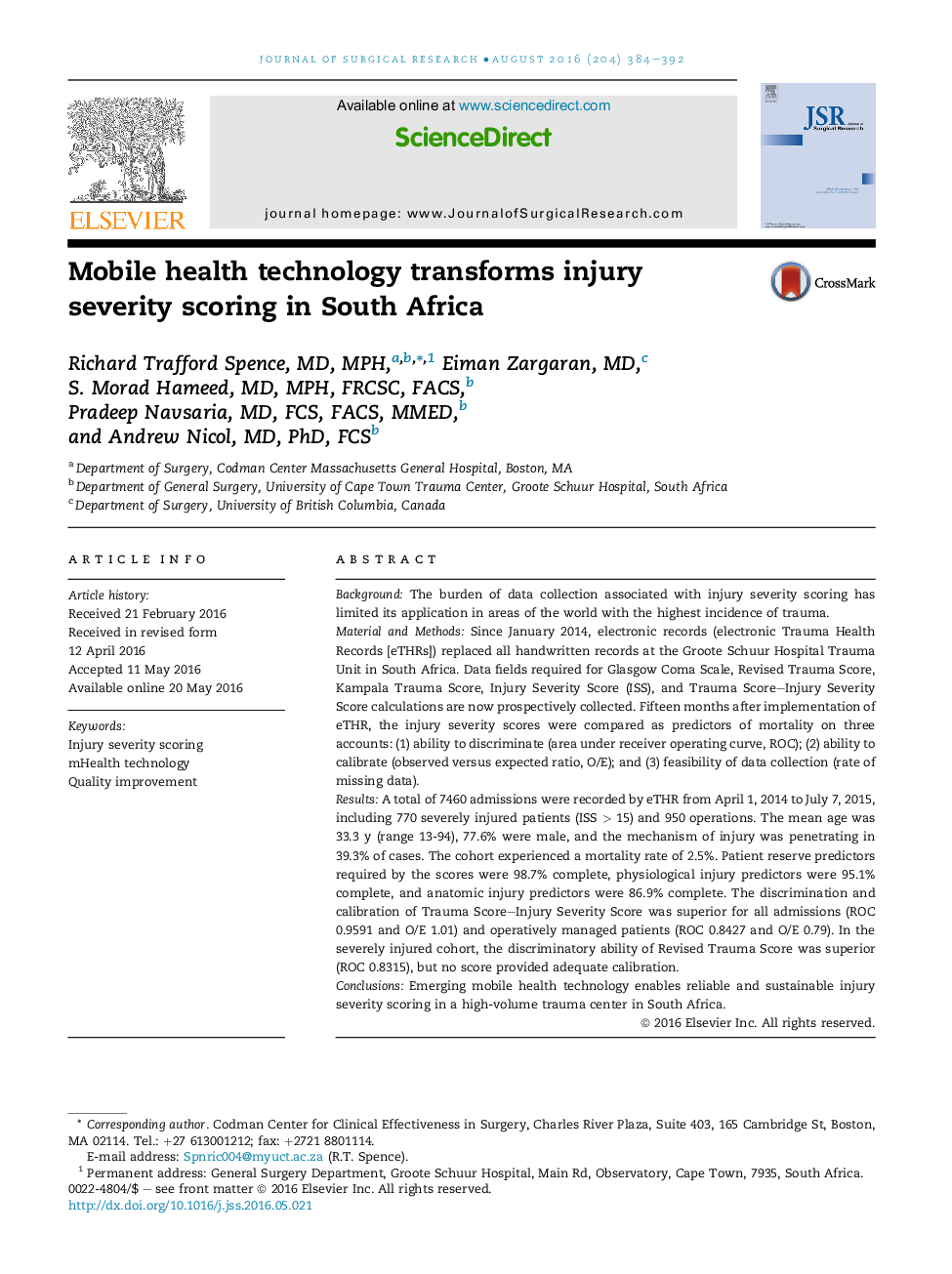| Article ID | Journal | Published Year | Pages | File Type |
|---|---|---|---|---|
| 4299125 | Journal of Surgical Research | 2016 | 9 Pages |
BackgroundThe burden of data collection associated with injury severity scoring has limited its application in areas of the world with the highest incidence of trauma.Material and MethodsSince January 2014, electronic records (electronic Trauma Health Records [eTHRs]) replaced all handwritten records at the Groote Schuur Hospital Trauma Unit in South Africa. Data fields required for Glasgow Coma Scale, Revised Trauma Score, Kampala Trauma Score, Injury Severity Score (ISS), and Trauma Score–Injury Severity Score calculations are now prospectively collected. Fifteen months after implementation of eTHR, the injury severity scores were compared as predictors of mortality on three accounts: (1) ability to discriminate (area under receiver operating curve, ROC); (2) ability to calibrate (observed versus expected ratio, O/E); and (3) feasibility of data collection (rate of missing data).ResultsA total of 7460 admissions were recorded by eTHR from April 1, 2014 to July 7, 2015, including 770 severely injured patients (ISS > 15) and 950 operations. The mean age was 33.3 y (range 13-94), 77.6% were male, and the mechanism of injury was penetrating in 39.3% of cases. The cohort experienced a mortality rate of 2.5%. Patient reserve predictors required by the scores were 98.7% complete, physiological injury predictors were 95.1% complete, and anatomic injury predictors were 86.9% complete. The discrimination and calibration of Trauma Score–Injury Severity Score was superior for all admissions (ROC 0.9591 and O/E 1.01) and operatively managed patients (ROC 0.8427 and O/E 0.79). In the severely injured cohort, the discriminatory ability of Revised Trauma Score was superior (ROC 0.8315), but no score provided adequate calibration.ConclusionsEmerging mobile health technology enables reliable and sustainable injury severity scoring in a high-volume trauma center in South Africa.
